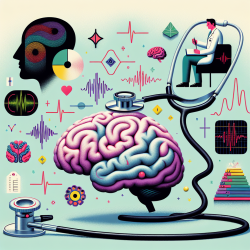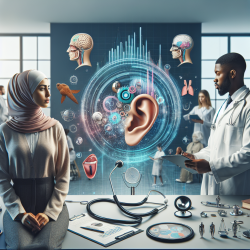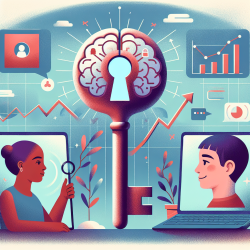Thalamocortical Dysrhythmia (TCD) is a fascinating model that seeks to explain a variety of neurological and psychiatric disorders through a common oscillatory pattern. This pattern involves the replacement of normal resting-state alpha activity with cross-frequency coupling of low- and high-frequency oscillations. Recent research using machine learning techniques has provided new insights into this phenomenon, offering valuable information for practitioners looking to enhance their understanding and treatment of conditions such as Parkinson's disease, neuropathic pain, tinnitus, and depression.
The Role of Machine Learning in TCD Research
The study "Thalamocortical dysrhythmia detected by machine learning" employs support vector machine (SVM) learning to analyze resting-state electroencephalography (EEG) patterns in patients with various disorders. The results reveal a spectrally equivalent but spatially distinct form of TCD depending on the specific disorder. This indicates that while the oscillatory patterns may be similar across different conditions, the affected brain areas vary, highlighting the complexity and specificity of TCD.
Key Findings and Implications
- Spectral Equivalence: The study demonstrates that TCD manifests as spectrally equivalent patterns across different disorders, suggesting a common underlying mechanism.
- Spatial Distinction: Despite spectral similarities, the spatial manifestation of TCD varies by disorder, with specific brain areas being implicated in each condition.
- Common Brain Areas: Certain brain areas are consistently involved in TCD across multiple disorders, reinforcing the model's validity as a mechanism underlying diverse neurological conditions.
These findings suggest that practitioners can benefit from considering both the spectral and spatial aspects of TCD when diagnosing and treating patients. Understanding the unique cortical signatures associated with each disorder can lead to more targeted interventions and improved patient outcomes.
Encouraging Further Research
The study's use of a data-driven approach highlights the potential for machine learning to uncover new insights into complex neurological phenomena. Practitioners are encouraged to explore further research in this area to enhance their understanding and application of TCD in clinical settings. By staying informed about advancements in machine learning and neuroscience, practitioners can continue to refine their skills and offer cutting-edge care to their patients.
To read the original research paper, please follow this link: Thalamocortical dysrhythmia detected by machine learning.










